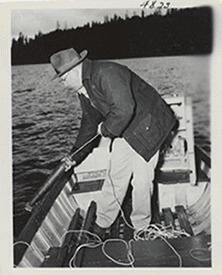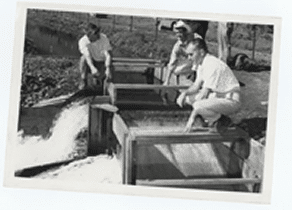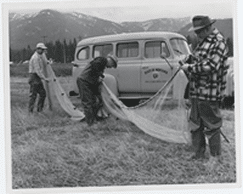What is APB? |
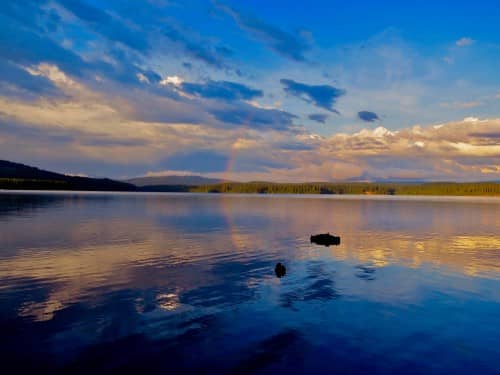
Introduction
APB members are a network of biologists working at utilities throughout the West Coast of the United States. This group has been meeting annually for over 50 years to share information on the latest resource management tools, technology and research that apply to the resources surrounding project lands for these utilities. Additionally, participants get first hand experience of these systems through a one day site visit to the annual featured project. The tour combines first hand experience with staff and consultants on site to share information on the evaluation, development and challenges of project modifications to promote improved biological performance and the tradeoffs with energy production.

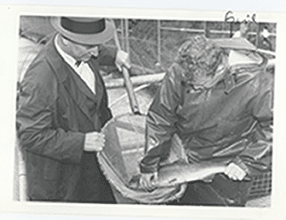
The Founding of the Association of Power Biologists
In the late 1950’s, the concept for the Association of Power Biologists (APB) was originally conceived by George Eicher, who was the Chief Biologist with Portland General Electric Company at the time. The main purpose of forming such an association was for biologists employed by power companies to discuss mutual problems and goals in the effort to aid their power-generating employers to produce electricity for the people of the Pacific Northwest in a manner that preserves biological resources.
In a letter dated August 6, 1959, George Eicher asked Zeke Madden (with Portland General Electric Company at Madras, OR) to assist in arranging a tour of the Pelton Round Butte Project on September 10, 1959 and Promontory Park and the North Fork Project on September 11, 1959. The proposed tour was for an audience of biologists employed by power companies within the Pacific Northwest. Eicher invited Wendell Smith (Idaho Power Company), Jack Hanel (Pacific Power & Light Company), Bernie Leman (Chelan County PUD), Roy Hamilton (Pacific Power & Light Company), Zeke Madden, and Tim Vaughan (Washington Water Power Company) to attend the tour.
The 1959 tour of the Pelton Round Butte Project became the first annual meeting of the Association of Power Biologists. In addition to information gained and shared at the tour, several stimulating and enlightening discussions occurred at the first annual conference on topics related to power production, power delivery and biological resources. Reports of this conference spread across the power production industry, interests grew, and an institution was formed.
The 1961 and Third Annual APB Conference was a conference of expansion and growth. APB membership was extended to utility biologists beyond the Pacific Northwest, and Norm Alstot (Southern California Edison) was inducted into APB. APB also voted and approved a change to the APB Constitution to allow membership to biologists employed by the U.S. Army Corps of Engineers. Accordingly, Joe Craig, Ivan Donaldson, Bert MacLean, Frederick Cramer and Roy Oligher–all biologists for the U.S. Army Corps of Engineers–were approved for APB membership on March 5, 1962. Additionally, a forum for information sharing as it relates to balancing power production and natural resources was in such demand, Dr. Arne Lindroth of the Swedish Salmon Research Institute visited the Pacific Northwest in 1962, met with George Eicher (APB’s First President), toured several projects, congratulated APB on its goals and offered Swedish fisheries literature to contribute to the enhancement of “power biology”.
The format of the APB annual meetings has remained unchanged since 1962. At the Fourth Annual APB Conference, the constitution was changed such that APB would meet annually, would include a project tour, papers would be presented by the members, and officer installments would occur at this time. Furthermore, it was agreed that the host would act as the program chairman. Today, 50 years after the original APB meeting, the format is unchanged.
